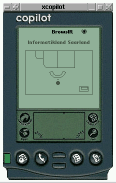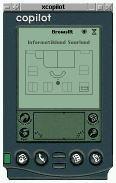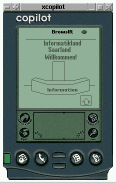


Next: Implicit tracking
Up: Augmenting Buildings with Infrared
Previous: Infrared broadcasting
Currently the IRREAL senders transmit formatted text and vector
graphics which may contain hyperlinks to each other (hypertext,
hypergraphics). Information is structured as a directed acyclic graph
of hyperdocuments and in each graph there is a specific starting
point or root node. Figure 1 shows a screenshot of
our hyperdocument authoring tool. One sender can send several
hyperdocuments each of which has a list of user or group IDs assigned
to it. Links can lead to elements (text or graphics) within the same
document or to the root node of another document. In this way it is
possible to broadcast information in different languages or, more
generally, for different user profiles. Elements of one document can be
reused in in all other documents which prevents the wasting of
bandwidth by duplicating data, such as language independent
graphics. All the documents are broadcast in a cycle and the relative
probability of every element being broadcast is controlled by its
relative importance value. A more detailed description of this
probabilistic broadcasting scheme can be found in
[2].




Figure 2: Screenshot of the hyperdocument browser software BrowsIR. The initial presentation only contains the floor plan with the exhibit in question. Then additional exhibits are displayed gray and as information comes in they turn black to signal that they are clickable. A perspective view of the current location can be chosen by selecting your own position (black dot).
Figure 2 shows some screenshots
of a Palm Pilot simulator (Xcopilot) running our client software
'BrowsIR'.



Next: Implicit tracking
Up: Augmenting Buildings with Infrared
Previous: Infrared broadcasting
Andreas Butz
Fri Sep 22 09:15:51 MEST 2000



